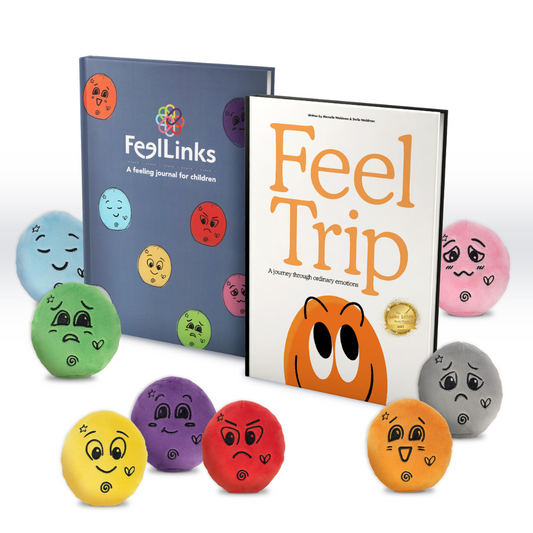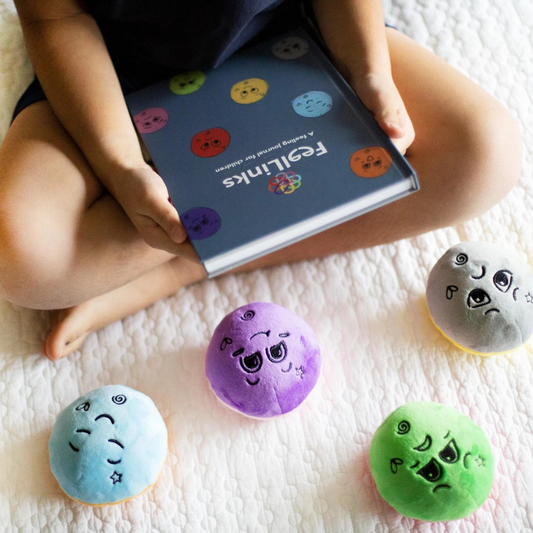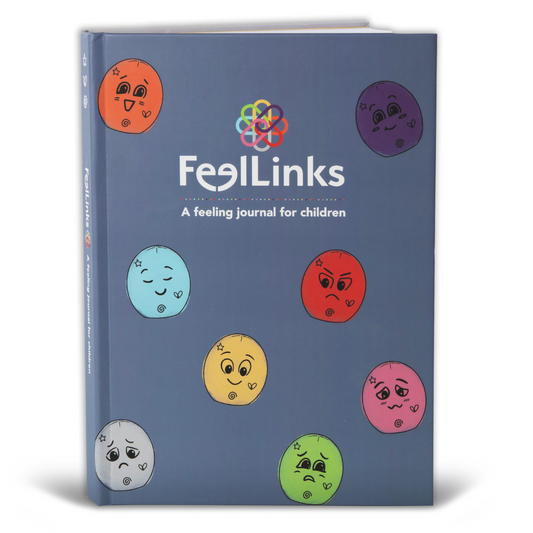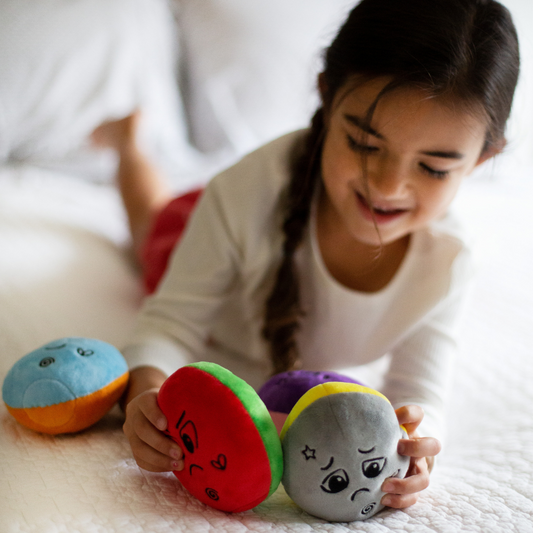🧠 Feelings Check-Ins Matter: At School & Home
Share

Morning meeting in a kindergarten classroom. The teacher and all students pass around FeelLinks Dolls and share their emotion(s) - students listen intently to one another, ask questions, show empathy and care
In an elementary classroom, a morning feelings check-in might seem like a simple routine—but it plays a vital role in shaping the emotional and academic success of young learners. These few minutes of intentional reflection can build emotional intelligence, strengthen relationships, and set the tone for a positive and productive day. And the benefits of this practice don’t have to stay at school—they’re just as important at home.
🌞 In the Classroom: Setting the Stage for Emotional Growth
For many children, school is the first place they begin to navigate social dynamics, face independent challenges, and build emotional awareness. A structured morning check-in supports these early developmental milestones by:
- Building Emotional Vocabulary
Children often feel emotions they can't yet name. Using feeling charts, sentence stems, or prompts like "Today I feel..." helps them identify and articulate what’s going on inside.
- Creating a Safe, Predictable Routine
Knowing there's a dedicated time to share feelings—without judgment—fosters trust and safety. For students who may not have consistent emotional support at home, this check-in is especially powerful.
- Fostering Empathy and Connection
Hearing that peers feel nervous, excited, or sad builds empathy. Students start to understand that emotions are universal, helping to create a more compassionate classroom culture.
- Supporting Self-Regulation
When students can name their emotions, they’re more capable of managing them. With teacher support, they can use calming strategies like deep breathing or squeezing/muscle tightening (with their FeelLinks Dolls), or movement breaks to refocus and be ready for learning.
💡 It only takes a few minutes— using FeelLinks Emotion Plush Dolls, daily emotional check-in charts, emotion wheels, or during your morning meeting circle— it lays the foundation for a stronger, more connected classroom.
It also supports teachers/staff in knowing how each student is entering their space and how they can best support their needs.
❤️ A Small Question, A Big Impact
"How are you feeling today?"
It’s a small question, but when asked with consistency and care, it shapes children’s ability to connect, reflect, and thrive—in school, at home, and far beyond.
🏡 Extending the Practice: Feelings Check-Ins at Home
Emotional check-ins don’t have to stop at the school doors. When families make space for these conversations, it sends an important message:
"Your feelings matter, and you’re safe sharing them here."
At home, check-ins can be part of everyday routines—during breakfast, the car ride home, or at bedtime. The consistency and tone are more important than the structure. When parents tune in to how their child is feeling, they build stronger communication and trust while reinforcing the same emotional skills taught in school.
🧸 Tools That Help at School and at Home: Emotion Dolls & Journaling
Whether at home or in the classroom, two tools make feelings check-ins more accessible and effective for kids:
1. FeelLinks Plush Emotion Dolls
These soft, inviting dolls display various facial expressions that represent different emotions. They’re especially helpful for younger children who may not yet have the language to express how they feel.
👉 A child can point to a doll and say, “I feel like this one,” creating an easy, pressure-free entry into emotional conversation. Emotion dolls also encourage pretend play—another powerful way to explore and process feelings.
2. FeelLinks Feelings Journals
For older children—or younger ones with adult support—journaling is a reflective outlet. Kids can draw and/or write/dictate about their day, name their emotions, and make sense of tricky moments and problem solve. Over time, journals help us notice patterns, and helps children develop insight, and build emotional resilience.
💬 Tip: If your child is open to sharing their journal entries, it can be a meaningful way to deepen your connection and offer gentle guidance.
🧰 Building a Lifelong Emotional Toolbox
When we prioritize emotional check-ins—both in the classroom and at home—we’re not just managing moods. We’re teaching children to become emotionally intelligent, self-aware, and empathetic humans.
They learn that emotions aren’t problems to hide but signals to understand. With tools like emotion dolls and journaling, and with daily moments of reflection, we help them build a lifelong emotional toolbox.
Building an Emotionally Healthy Home and Classroom
When we prioritize emotional check-ins both in the classroom and at home, we help children grow into emotionally intelligent, self-aware, and empathetic individuals. By using tools like emotion dolls and journaling, we give them developmentally appropriate ways to express themselves. And by consistently asking, “How are you feeling today?” we teach them that emotions aren’t something to hide—they’re something to understand.
It’s a small question with a big impact—and it starts with just a few intentional minutes each day.





